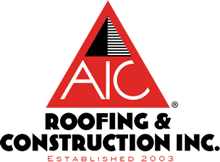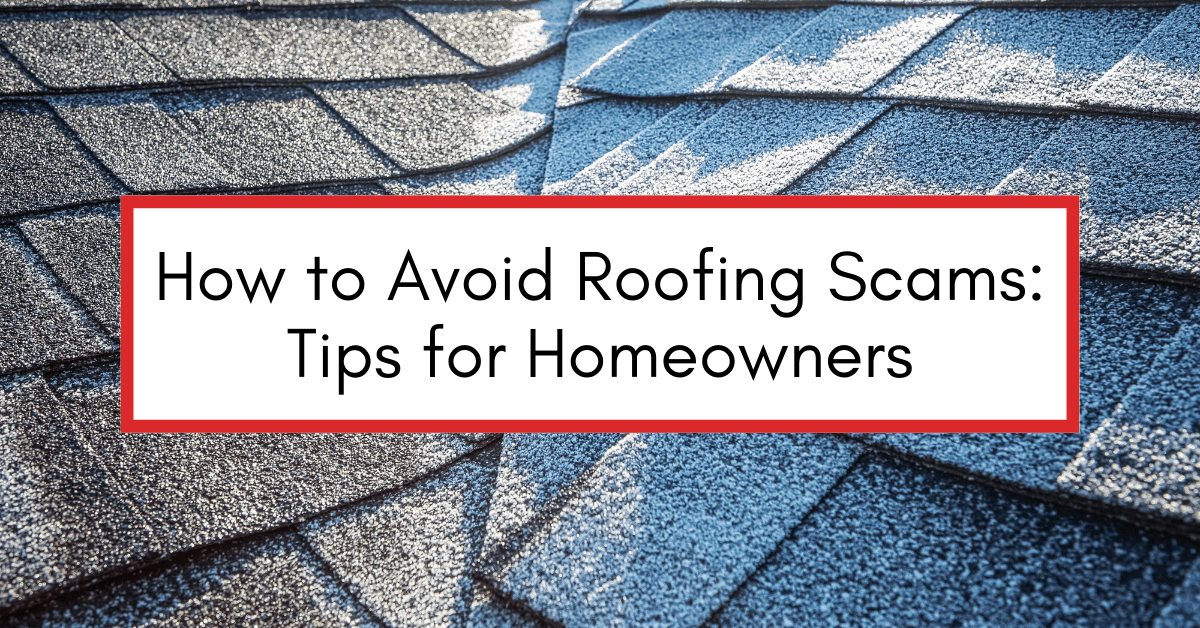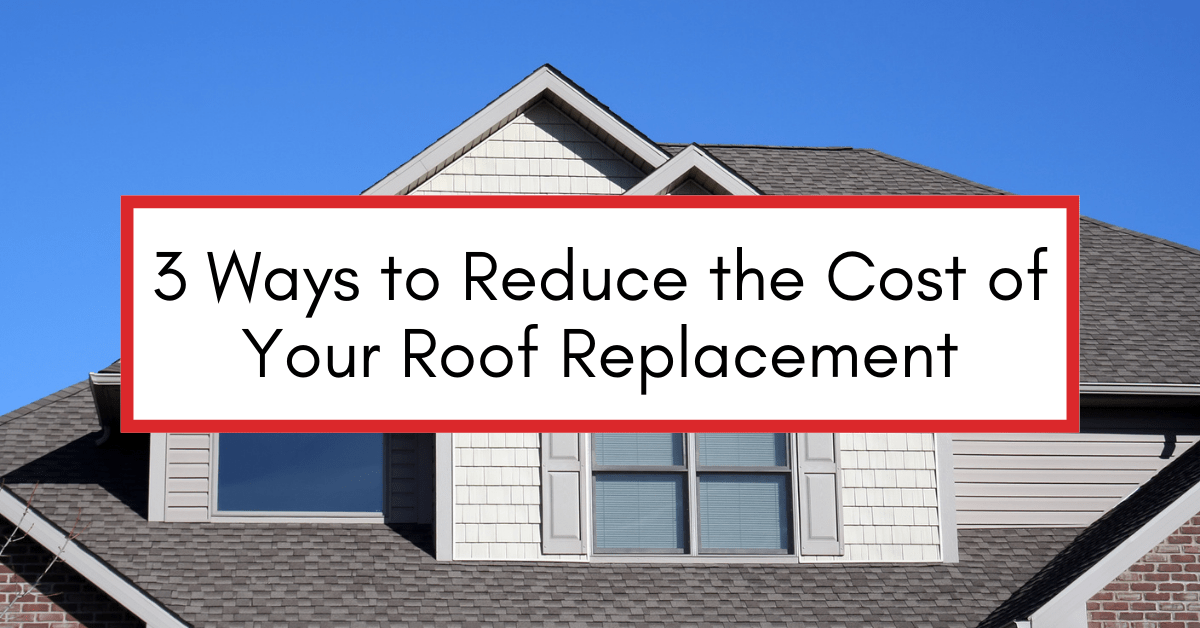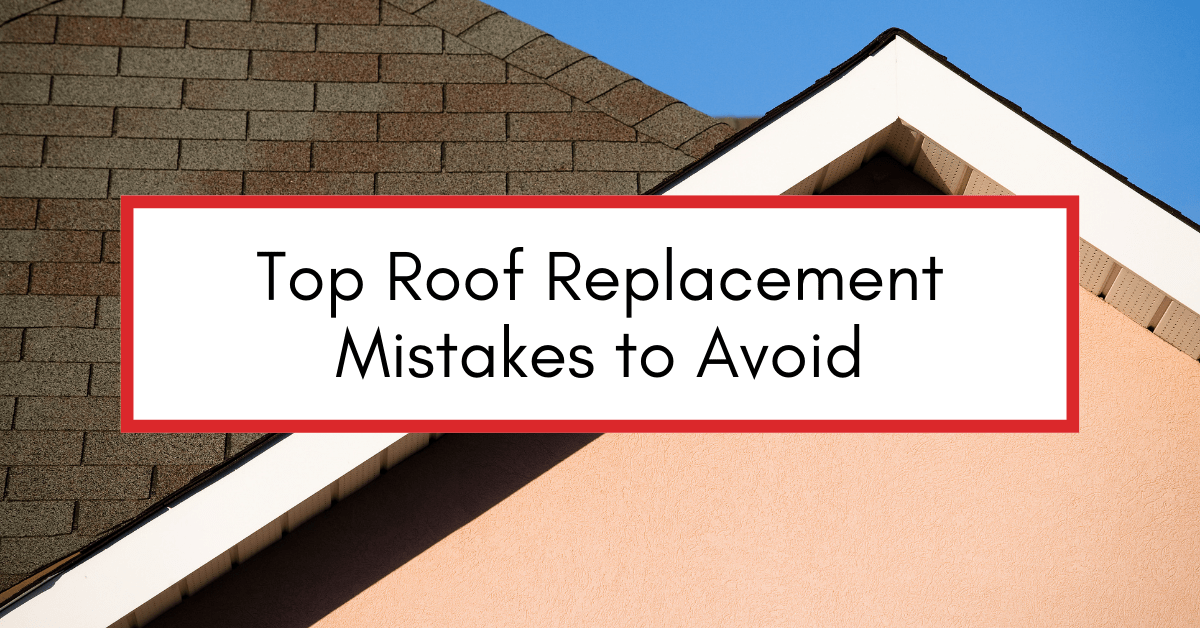Roof replacement is an essential aspect of home maintenance that ensures the safety and integrity of your property. It involves removing the old roofing material and installing new materials, which can significantly enhance the aesthetic appeal and energy efficiency of your home. Understanding the fundamentals surrounding roof replacement can help homeowners make informed decisions when the time comes for this crucial upgrade.
At AIC Roofing & Construction, we want to take the stress out of your roof replacement! In this article, we’ll debunk 4 common roofing myths so you can confidently make decisions about your home and roof replacement.
Common Misconceptions About Roof Replacement
Despite the importance of roof replacement, there are several misconceptions that homeowners often hold. Addressing these myths can help ensure that homeowners approach the topic with the right mindset and knowledge, ultimately leading to better decision-making.
Myth 1: Roof Replacement is Always Expensive
One of the most pervasive myths is that roof replacement is prohibitively expensive. While it’s true that costs can vary significantly based on materials and labor, many options are available for different budgets. Additionally, investing in a quality roof can lead to long-term savings through energy efficiency and reduced repair needs.
Homeowners should also explore financing options, grants, or insurance claims, especially if severe weather or other unforeseen circumstances led to the need for replacement. Understanding the cost breakdown can help in realizing that the investment made in a new roof is just that—an investment. Furthermore, many roofing companies offer seasonal discounts or promotions, which can further alleviate the financial burden. By timing the replacement strategically, homeowners can take advantage of these savings opportunities.
Myth 2: All Roofing Materials are the Same
Another common misunderstanding is that all roofing materials offer the same level of durability and protection. In reality, roofing materials vary widely in terms of lifespan, maintenance, cost, and performance. For example, asphalt shingles are affordable and easy to install, whereas metal roofing can provide longevity and energy efficiency but at a higher initial cost.
When selecting roofing materials, homeowners must consider climate, architectural style, and personal budget. This enables them to choose the best fit for their specific needs while also avoiding the pitfalls of a one-size-fits-all approach. Additionally, advancements in roofing technology have led to innovative materials such as synthetic shingles and eco-friendly options that not only enhance durability but also contribute to sustainability. Homeowners should take the time to research and consult with professionals to understand the benefits and drawbacks of each material, ensuring a well-informed decision.
Myth 3: Roof Replacement Can Be a DIY Project
While some homeowners may feel confident undertaking roof replacement as a DIY project, this can lead to complications and risks. Properly replacing a roof involves a variety of skills, including working at heights, understanding local codes, and ensuring correct installation. Mistakes in these areas can lead to significant repairs and even safety hazards.
Hiring professionals not only ensures a job done correctly but often comes with warranties and guarantees that DIY projects lack. Homeowners should evaluate their skills and consider hiring experienced contractors to handle their roof replacement. In addition, professional roofers have access to high-quality materials and tools that may not be readily available to the average homeowner, further enhancing the quality of the work performed. This professional touch can make a significant difference in the longevity and performance of the new roof.
Myth 4: Roof Replacement is Not Necessary Until Leaks Appear
Waiting until leaks or other obvious damage appears before considering roof replacement is another dangerous myth. In many cases, issues can go unnoticed until they become severe, leading to costly structural damage. Regular roof inspections can identify potential problems before they become critical.
Moreover, proactive roof replacement can afford homeowners peace of mind and prevent the stress and financial burden associated with emergency repairs caused by severe weather or structural failure. Many roofing experts recommend scheduling inspections at least once a year, especially after severe weather events. This preventative approach not only extends the life of the roof but can also enhance the overall energy efficiency of the home, leading to lower utility bills and a more comfortable living environment. By staying ahead of potential issues, homeowners can ensure their roofs remain in optimal condition for years to come.
The Truth Behind the Myths
Addressing these myths is crucial for homeowners aiming to make informed decisions regarding roof replacement. Understanding the realities can significantly alter perceptions and lead to better overall choices regarding home maintenance. With the right knowledge, homeowners can navigate the complexities of roofing with confidence, ensuring that their homes remain safe and secure for years to come.
The Real Cost of Roof Replacement
The actual cost of roof replacement involves more than just the price of materials. Labor, permits, and underlying structural repairs should also be factored into the total. While the investment may seem substantial, the long-term benefits, including increased property value and energy efficiency, often justify the expenditure. Additionally, homeowners should be aware of potential hidden costs, such as the need for roof decking repairs or the removal of old roofing materials, which can add to the overall budget.
Furthermore, financing options are available for those who may find the upfront costs daunting. Many roofing companies offer payment plans or financing solutions that can help spread the cost over time, making it more manageable. Homeowners should also consider the potential return on investment (ROI) when replacing their roofs, as a new roof can significantly enhance curb appeal and attract potential buyers if they decide to sell their home in the future.
The Variety of Roofing Materials
Understanding that not all roofing materials are created equal opens homeowners up to a range of options. Each type of material, from asphalt to slate to tiles, has its pros and cons. Asphalt shingles may be quicker and cheaper to install, but materials such as metal or slate offer durability that can save homeowners money in the long run. Additionally, eco-friendly options, such as solar tiles or recycled materials, are becoming increasingly popular, allowing homeowners to make environmentally conscious choices while still protecting their homes.
Homeowners should take the time to research which materials suit their geographic area and home style. Engaging with roofing professionals can also yield insights into trending products and what may be best for their specific circumstances. For instance, in areas prone to severe weather, investing in impact-resistant materials may be wise. Understanding the local climate and its impact on roofing longevity can help homeowners make choices that ensure their roofs withstand the test of time.
The Importance of Professional Roof Replacement
Professional roofers bring specialized knowledge and experience that reduces the risk of error during installation. They are familiar with local building codes and access to quality materials and techniques that homeowners might not be aware of. Additionally, professional roofers often have established relationships with suppliers, which can lead to better pricing on materials and a more streamlined installation process.
Moreover, opting for a seasoned professional often includes warranties and ongoing support, which can be critical during the lifespan of the roof. This means that if issues arise, homeowners have professionals to turn to for resolution—something that DIY projects typically lack. A reputable contractor will also conduct thorough inspections before and after installation, ensuring that every aspect of the roof is up to standard and that any potential issues are addressed promptly.
The Risks of Delaying Roof Replacement
Delaying roof replacement might seem like a way to save money now, but it can lead to far more expensive problems later. Damage from leaks can spread, potentially compromising walls, ceilings, and even foundations. Moreover, a compromised roof can lead to health hazards from mold and mildew. Homeowners may also face increased energy costs as their HVAC systems work harder to maintain comfortable indoor temperatures due to inadequate insulation or ventilation caused by a failing roof.
Regular maintenance, inspections, and timely replacements keep homes safe and prevent minor issues from escalating into major crises, emphasizing the importance of taking these considerations seriously. Investing in routine check-ups can help identify potential problems early, allowing homeowners to address them before they require costly repairs or full replacements. By prioritizing roof health, homeowners not only protect their investment but also ensure a safe and comfortable living environment for their families.
Making Informed Decisions About Roof Replacement
Knowledge is power when it comes to roof replacement. By understanding the key factors surrounding roofing processes and options available, homeowners can make better decisions that will serve them well long-term.
Factors to Consider When Replacing Your Roof
When planning a roof replacement, homeowners should consider a variety of factors, such as budget, roofing material choices, local climate conditions, and the overall architectural style of the home. Each of these considerations plays a pivotal role in ensuring that the chosen solution is appropriate and sustainable.
Furthermore, understanding the timeline of the project and how it fits into the homeowner’s life is essential. Planning in advance alleviates potential disruptions caused by the construction process.
Choosing the Right Roofing Material for Your Home
Selecting roofing material involves weighing the advantages and disadvantages of each option available. Factors such as cost, longevity, maintenance requirements, and energy efficiency should guide homeowners in choosing the right materials for their specific needs.
Homeowners can consult local suppliers and contractors to understand which materials perform best in their area and what might yield the best long-term results.
Selecting a Reliable Roofing Contractor
Lastly, finding a reputable and reliable roofing contractor is crucial. Homeowners should check credentials, read reviews, and ask for references to ensure they hire a professional who will perform quality work.
A trusted contractor will not only provide a clear plan and cost estimate but will also communicate effectively throughout the project. Building a good relationship with a contractor can lead to better outcomes and peace of mind during the replacement process.
Top-Rated Roof Replacement in Central Kentucky
AIC Roofing has replaced over 10,000 roofs in the Lexington, Louisville, and Richmond areas. We are in the top 2% of roofing contractors in North America that received the GAF Master Elite Certification. Working with a GAF Master Elite certified contractor should give you peace of mind that you’re working with an experienced roofer that has undergone rigorous training. Along with our GAF Master Elite certification comes an extended material and craftsmanship warranty. We renew this certification every year as part of our commitment to excellence.
We don’t cut corners on your roof replacement and pride ourselves on our best-in-class customer service and experience. If you’re preparing for a roof replacement or would like a second opinion – only trust your home to the best. Contact us today for a free estimate on your roof.
3-tab attics barns chimney choosing a contractor commercial cost curb appeal DIY estimate financing flashing flat roof GAF glossary gutter replacement gutters gutter size gutter system ice dams inspections insurance missing shingles roof design roofing materials roofing system roof leak roof maintenance roof materials roof repair roof replacement roof shapes roof types shingle ratings shingles siding siding materials siding replacement skylights storm damage underlayment ventilation warranty winter







